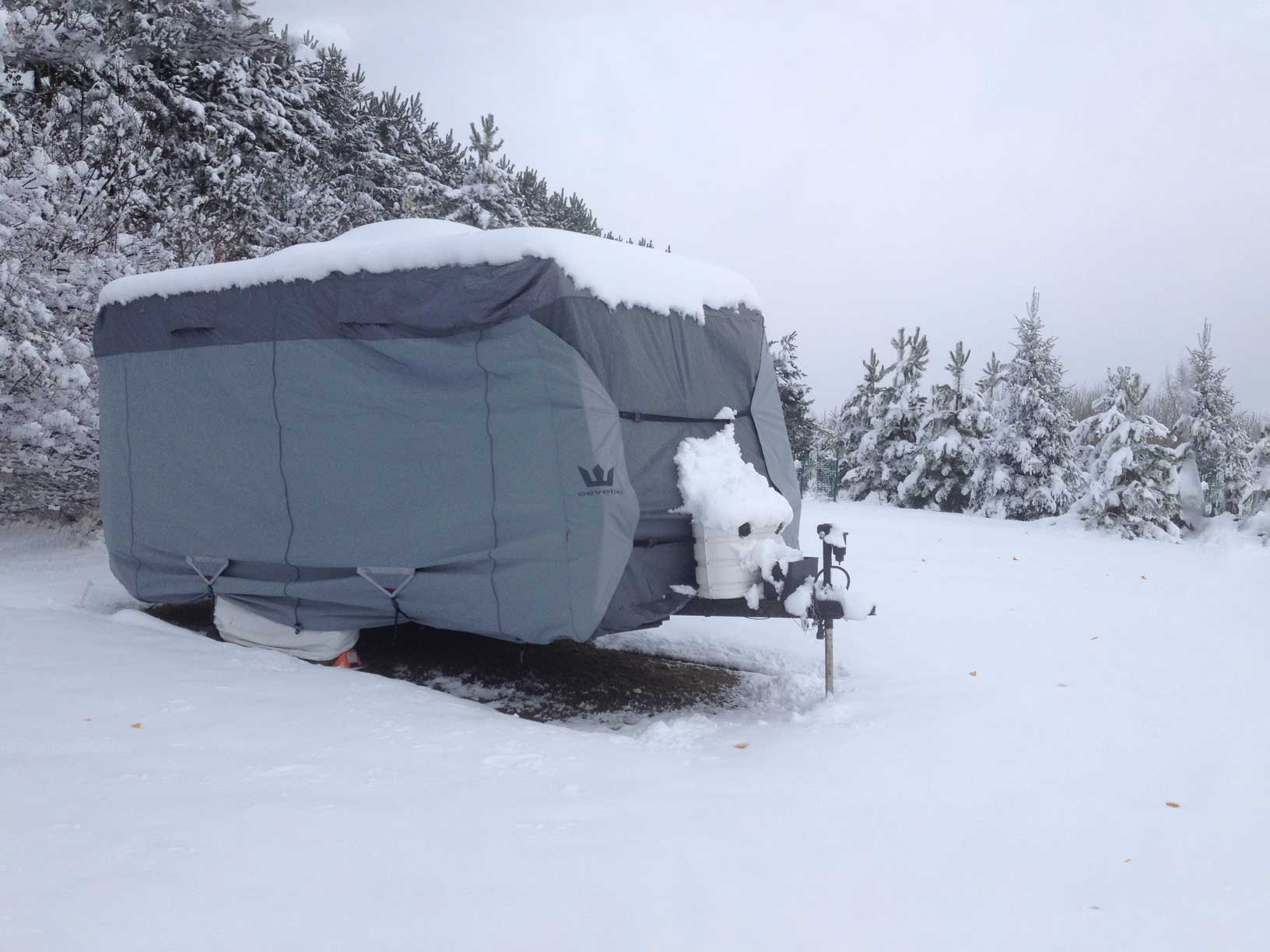After retiring from an architecture and construction career, Mark Knowlton of Florida was hoping to build a small teardrop trailer for traveling around the country. He planned on towing the trailer with his Toyota Prius V.
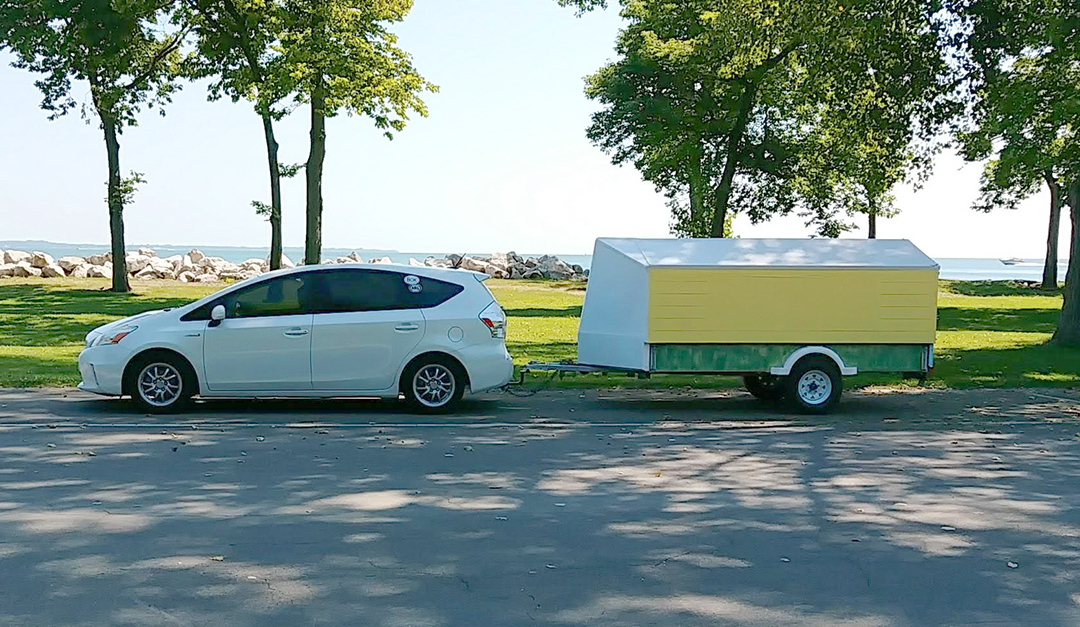
However, he realized he didn’t want to spend his camping days crawling over his bed. After being inspired by an Instructables and Do It Yourself RV post on a foam panel trailer by Rowerwet, he decided to build his own version of a lightweight trailer.
“I wanted to prove that you don’t have to have a 35-foot rig and a $40,000 pickup to have just as much fun with a rig that is compact.”
Mark Knowlton
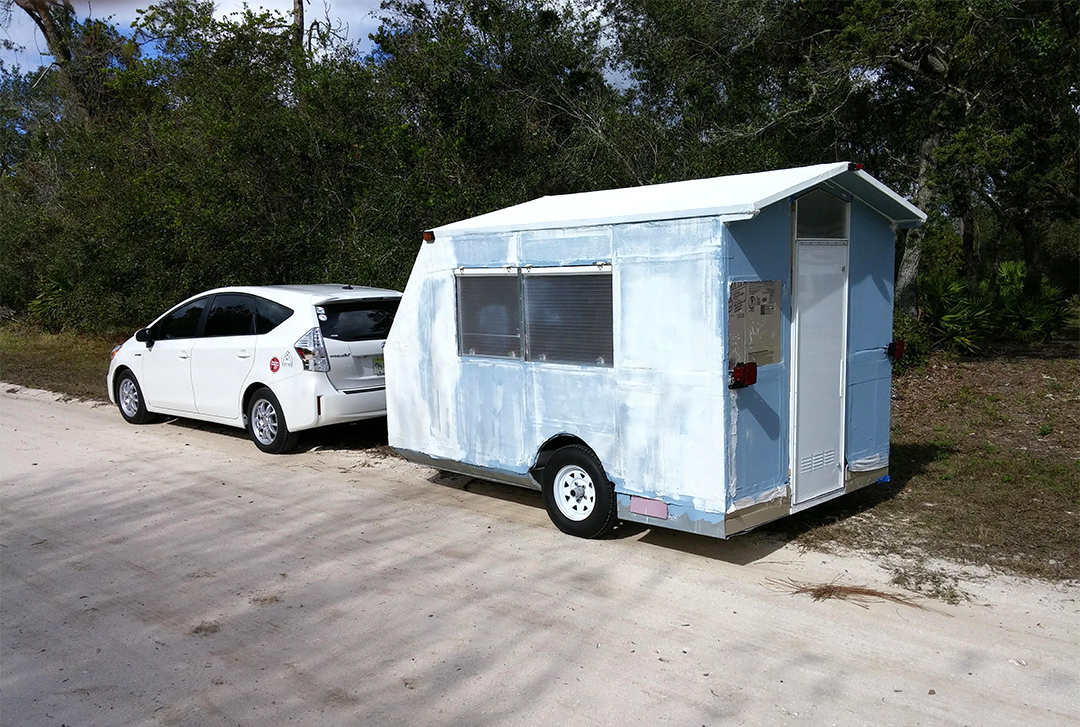
Knowlton’s first foam trailer, called “Foamy I”, was built on a 60-inch wide axle and steel angle trailer that he made from scratch. The axles for the trailer are Dexter Torsion axles which offer independent suspension.
The rest of the trailer was constructed with 1.5-inch rigid insulation foam on a 1.5-inch steel stud frame. The foam is from Owens Corning and has an R-value of about 7.5.
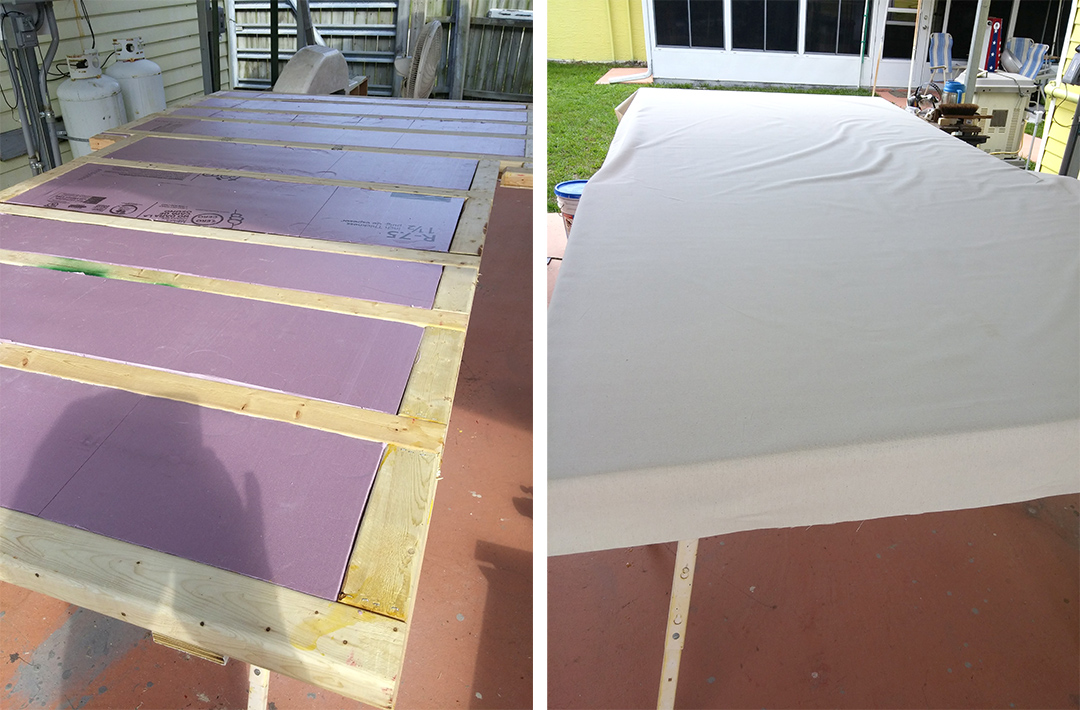
Foamy I’s exterior is covered with painter’s drop cloths from Harbor Freight. Knowlton then painted over the drop cloth fabric with several coats of leftover latex paint he received from a professional painter.
The interior is lined with 5 mm plywood and has a basic layout. Knowlton installed some shelving and benches, windows from hurricane storm panels, and a hinged top. When completed, Foamy I only weighed 850 lb.
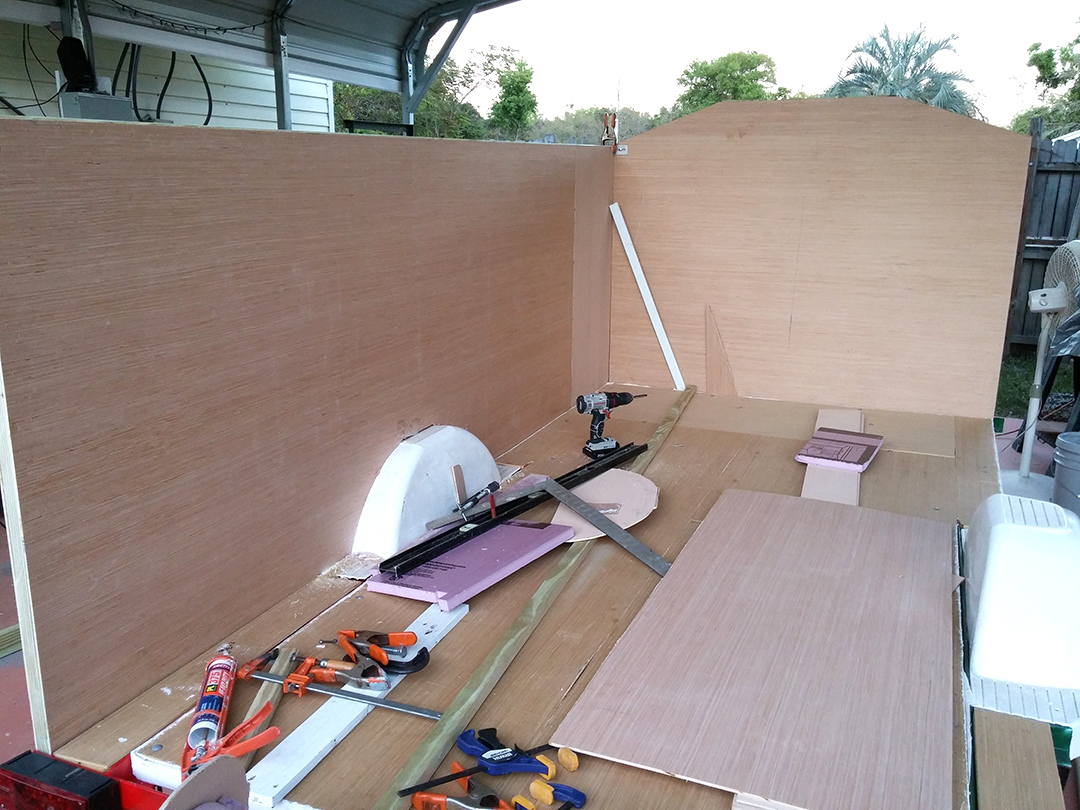
After building Foamy I, Knowlton realized that while the trailer was lightweight, it did create too much drag. So he decided to build a second trailer using the same techniques but “Foamy 2” would have an extendable roof.
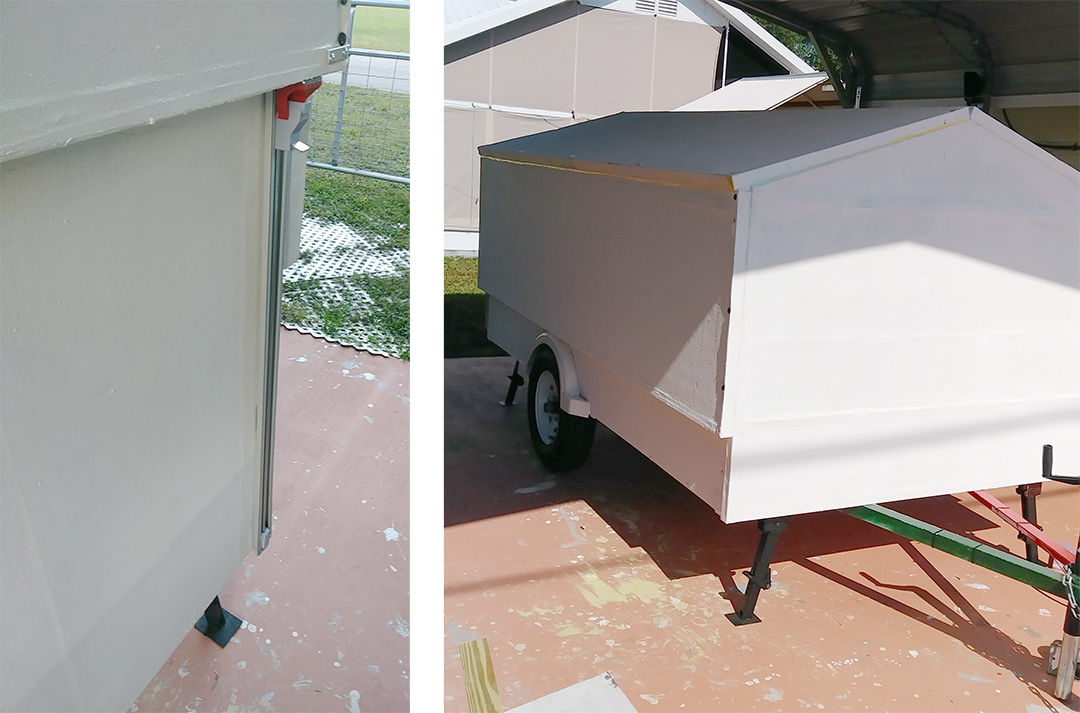
Foamy II or “HiLo” is also built on a handmade steel trailer with a 48-inch wide axle. When the roof is raised up, it has 6 feet 8 inches of headroom and only weighs 1,150 lb. It sleeps two people on two bunk beds and has both air conditioning and heat.
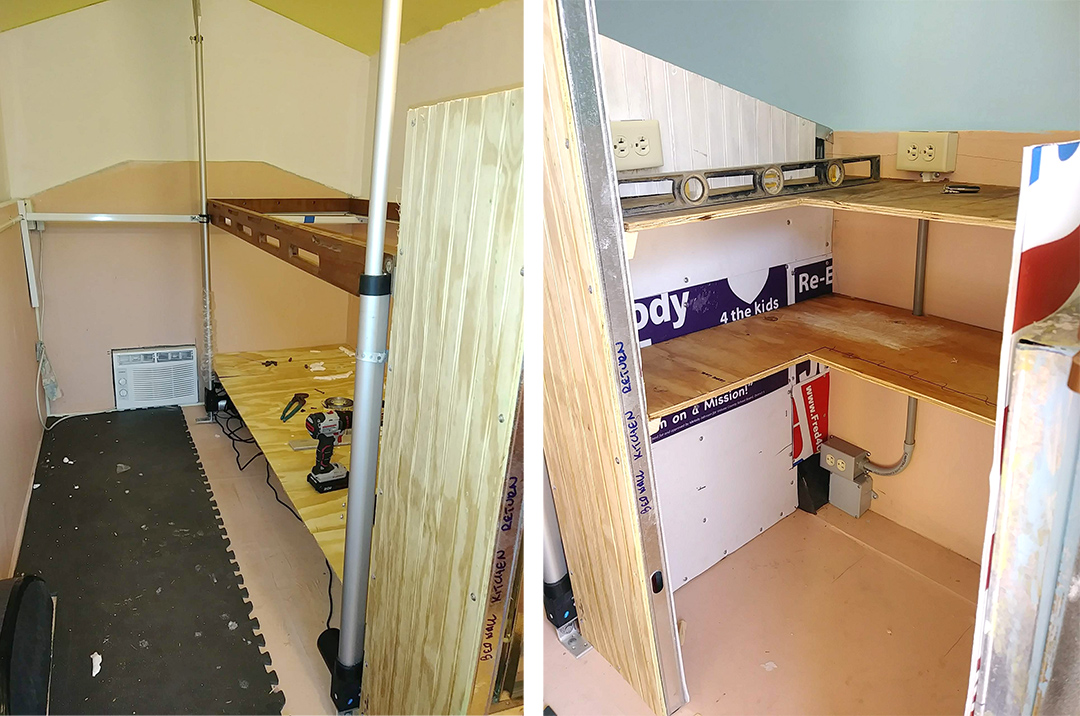
The pitched trailer roof is built as a separate piece that raises up using two electric linear actuator lifts from Progressive Automations. The lifts are screwed into the floor and into the steel trailer since they are so strong.
The lifts can be run by either 12-volt or when the trailer is connected to shore power. When the roof is raised, the upper bunk bed can be pushed up and connected to the wall. The bed is again lowered when the lifts and roof are lowered and the entire roof section tucks in over the bottom section.
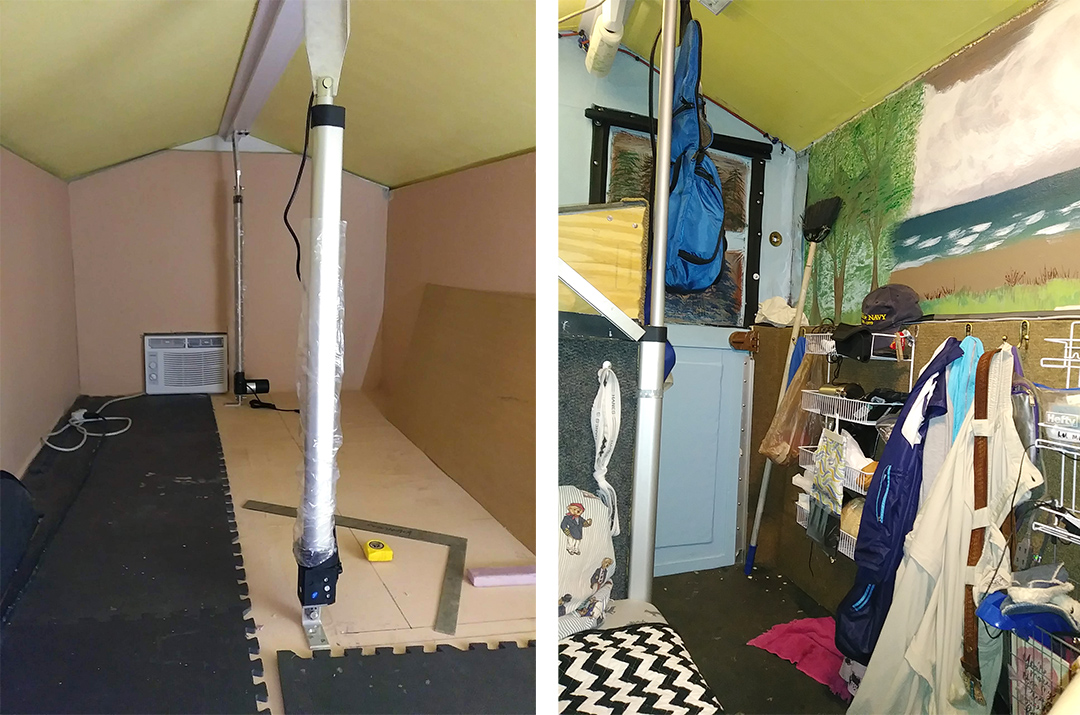
The Dutch door at the back of the camper has an upper portion with a wood trim that protects both the upper door and the bottom door from water. Knowlton and his wife use a screen shelter at the back of Foamy 2 for additional protection and an outdoor living area.
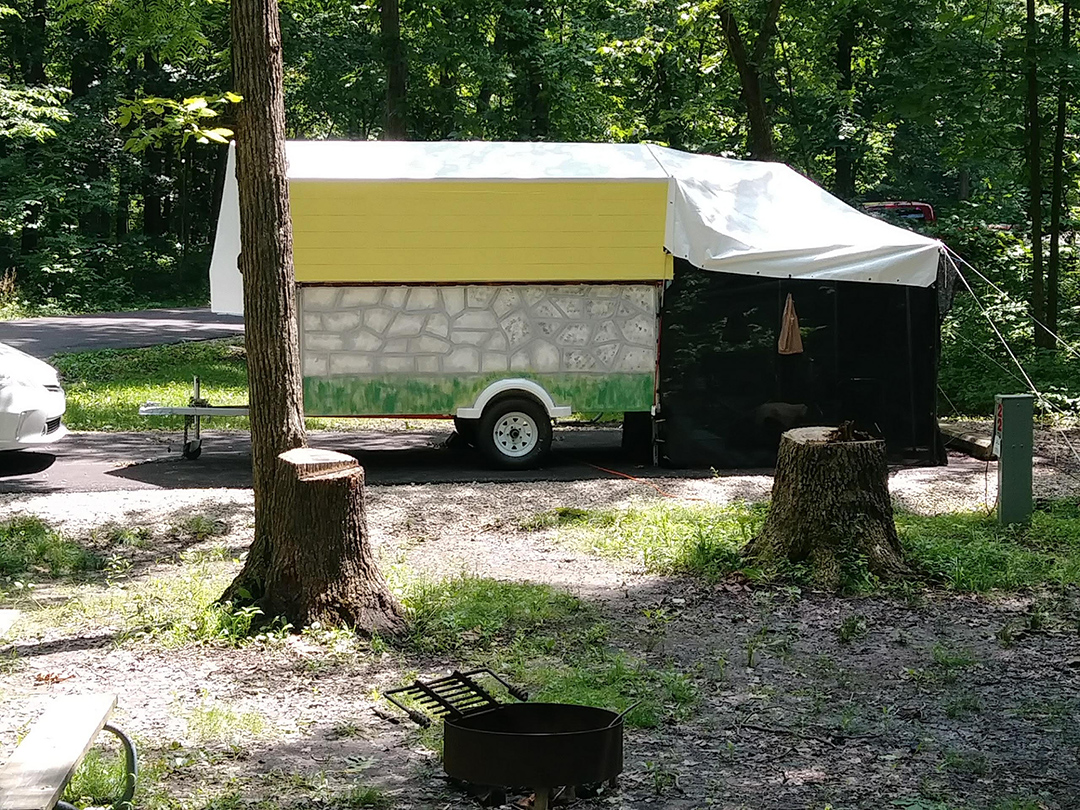
Knowlton added some other interesting features to Foamy 2. He used roofing paint on the bottom of the trailer for waterproofing and 5 1/4 wood decking and rope for the upper bunk bed.
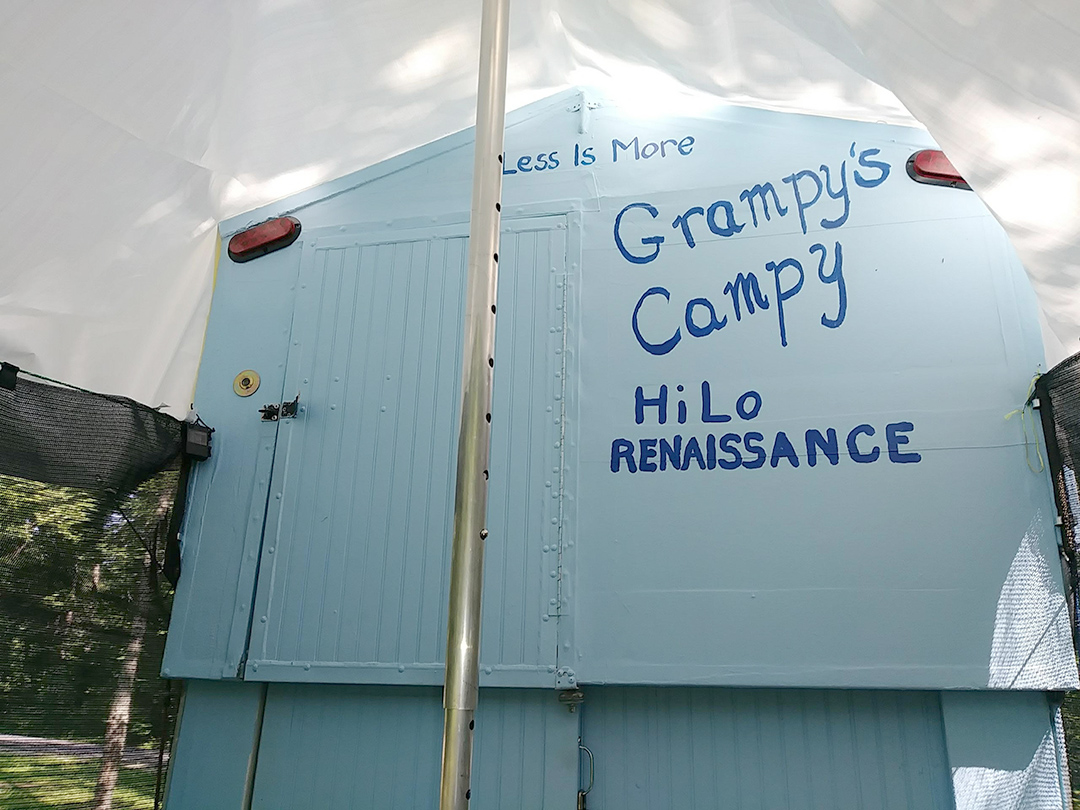
He used the same “poor man’s fiberglass” drop cloth technique on the exterior with a 50-yard roll of canvas. Knowlton mentioned that the canvas used up less paint than the drop cloth material. He calls the little trailer his “canvas condominium.”
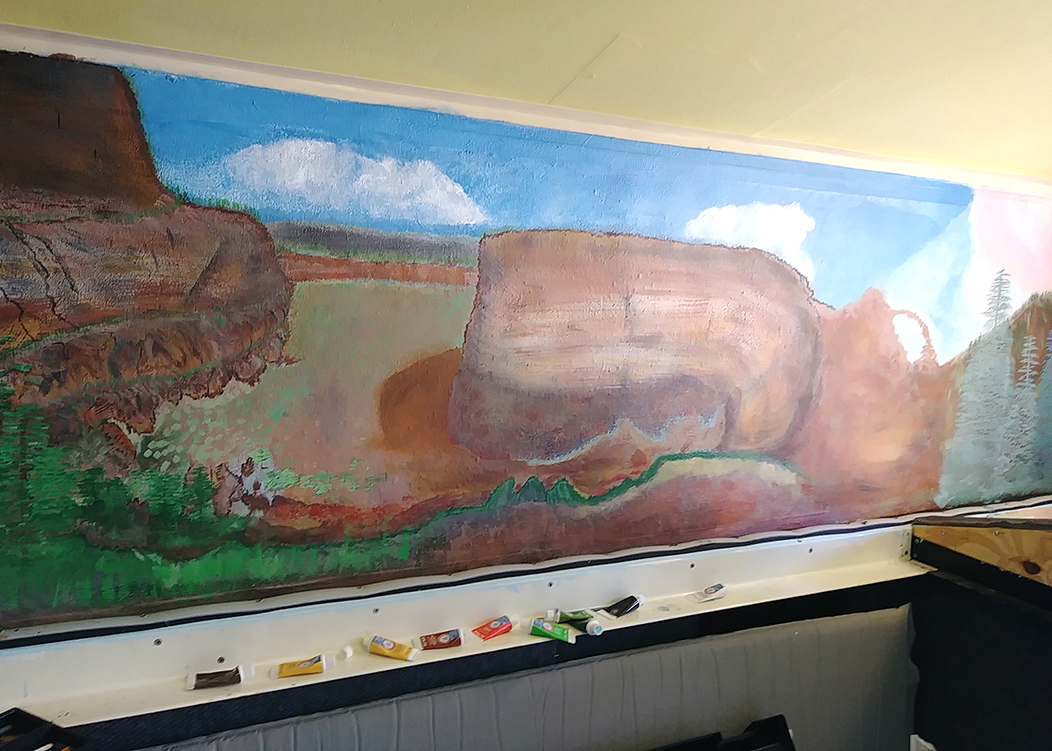
What makes this trailer stand out even more is Knowlton’s murals that mimic the natural world. During a stint of physical therapy after an operation, Knowlton spent his time watching old videos of public personality and painter, Bob Ross.
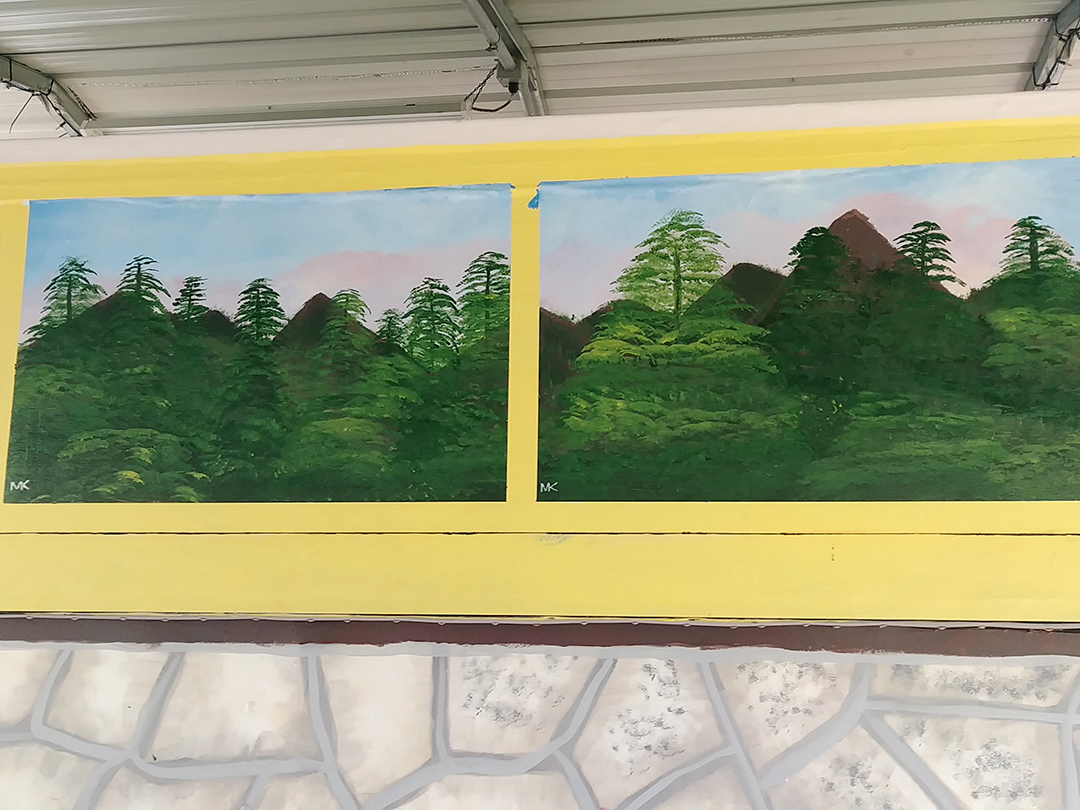
Knowlton decided to give the “happy little trees” technique a spin and found out he really enjoyed the process. Along with designing foam trailers, Knowlton says that painting the murals “has become another interesting hobby.”

